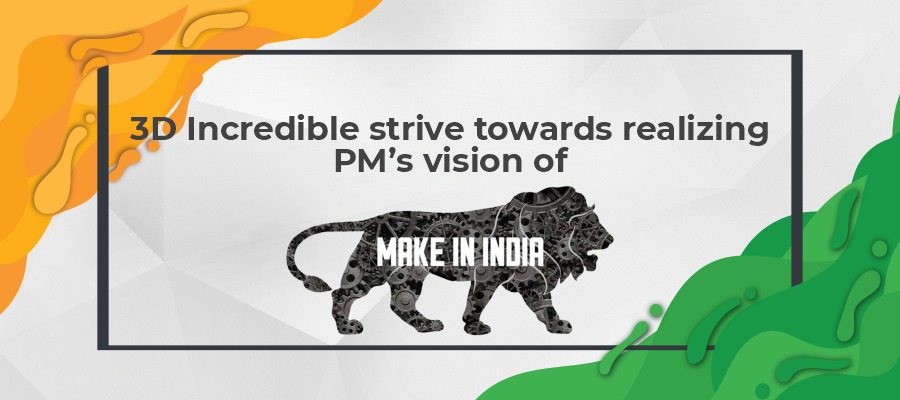Additive Manufacturing is one of the important pillars of Industry 4.0 which automates production process with smart direct digital manufacturing technique. AM has reduced prototyping time or batch production time upto 90% than conventional manufacturing technique. Because of various benefits of additive manufacturing like liberty to design complex components, rapid part production, which were not possible in conventional techniques, it has found its applications in all fields ranging from jewellery, automotive, medical, aerospace, manufacturing, tooling, oil & gas, spare parts, chemical and food processing, pharmaceutical, creative part production, and so on.
Since its invention in 1970s Additive Manufacturing has evolved in different forms which are categorised as selective laser sintering, binder jetting, vat photopolymerisation, fused deposition modelling, material jeting, direct energy deposition, powder bed fusion etc
Since then it has been seen concrete advancement and has been used in a wide range of domains.
The Upcoming Era of Additive Manufacturing
As per the global point of view the additive manufacturing market was $5 billion in 2015 and is expected to reach $14 billion by 2020. The market for additive manufacturing is rapidly growing through various aspects. We have covered some insights into the sector in this article. Manufacturing small parts that require detailed designs to the complex humongous industrial equipment is possible due to additive manufacturing. No one would have predicted AM’s market to grow as such level; it is now predicted to be worth $250-billion by 2025. Considering the regional aspect Indian markets are expected to reach $79 million by 2021.
With smooth operation workflow, additive manufacturing has tremendously boosted the speed of product life cycle management. With good IT infrastructure, collaborative, transparent, and efficient supply chain is achieved in biomedical sector with additive manufacturing.
Steps in Additive Manufacturing:
- Prepare CAD file with build preparation and send to machine remotely
- Prepare and start the machine
- After completion of printing, clean the part and post process for desired quality
With this easy steps, AM has reduced the number of iteration in product development.
Some factories in the world have deployed AM for mass production too. The advancement in raw material manufacturing, localisation of material manufacturing has helped a bit to reduce the material cost.
Surgery planning, patient specific jigs, fixtures and implant manufacturing by AM has made surgery much easier, reduced the surgery time and eliminated errors during surgery. This has proved a boon for patients and doctors. Patient education has become easier before surgery.
Topology optimisation and DFAM techniques has boosted the aerospace, energy, oil & gas and automotive sector by weigh reduction, and compact designs up to 70 percent. Newly upcoming technologies and materials are ready to take over major conventional manufacturing market.
Major Trends in the Market
- Use of Plastic: The first time of additive manufacturing that was adopted was the used deposition modelling (FDM). This process involves melting and depositing plastic layers to create a 3D part. After that, the most popular types were stereolithography and selective laser sintering. This has enabled the producers to provide fine-quality products.
- Metal Printing: The manufacturers using metal 3D printing is the major contributor in the markets of additive manufacturing. Many good performance models are made using metals like aluminium, steel, nickel alloys, titanium, and iron powders. The products have unique and complex designs and have the highest demand in the medical and aerospace industry.
- Automation: Additive manufacturing has automated most pre-production and production steps in the manufacturing process. The experts only need to carry out certain post-production tasks like heat treatment, coating processes, solvent-washing, and abrasive polishing.
- Digital light synthesis: To overcome the challenges in the industry digital light synthesis was introduced. This instrument administers a chemical reaction through software that makes the production faster.
Basic Business Model
The plastic 3D printing market is dominated by large players due to targeted acquisitions, wide adoptions, and sale models. Whereas, the metal 3D printing market has a major contribution by small manufacturers as it has great scope in the value chain. The business model is primarily driven by digital scales, owning printing equipment, and service models.
Conclusion
One of the major players in the Indian additive manufacturing market is Incredible AM Pvt Ltd. The company ventured in 2017 and has been fulfilling 3D printing needs of in Healthcare as well as Engineering Industries. Their high-end equipment is capable of creating models within 0.2 mm accuracy and sliced into thin layers of 50 microns.




